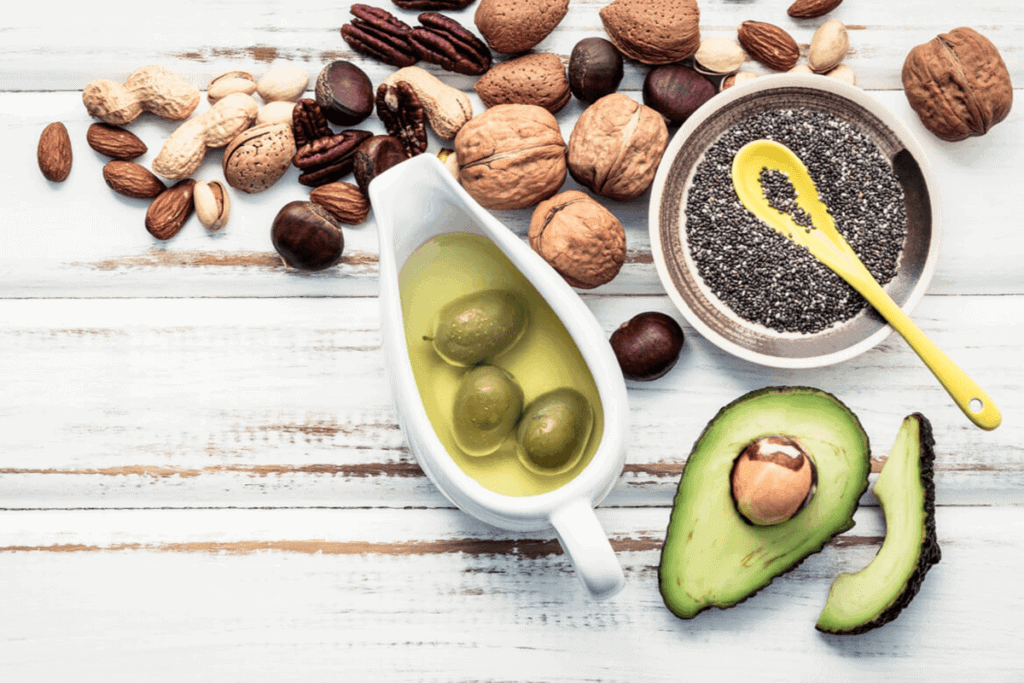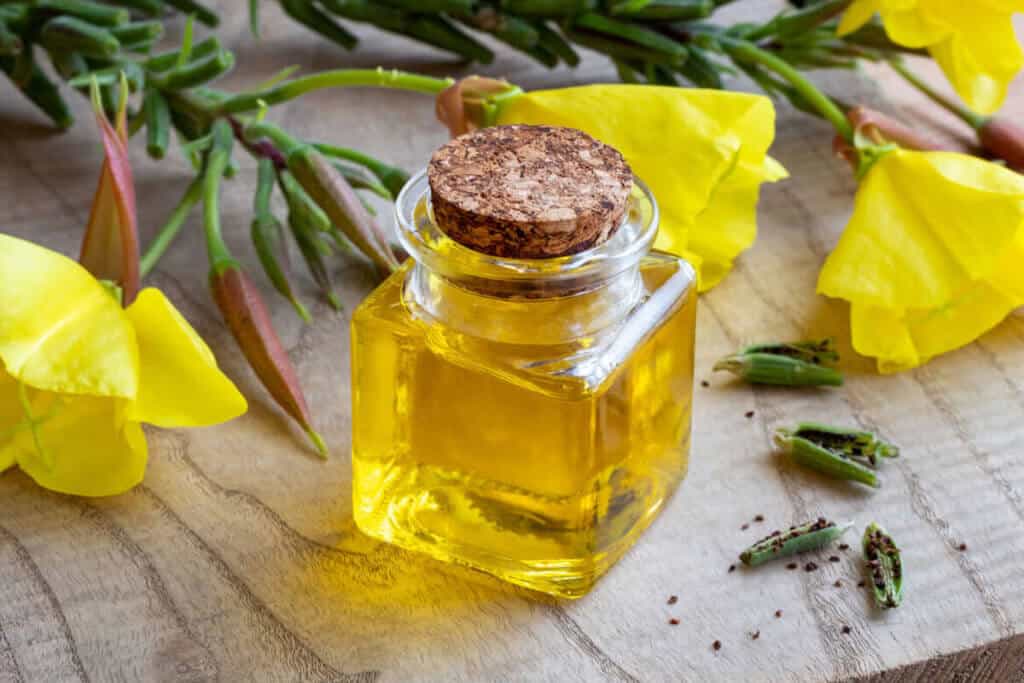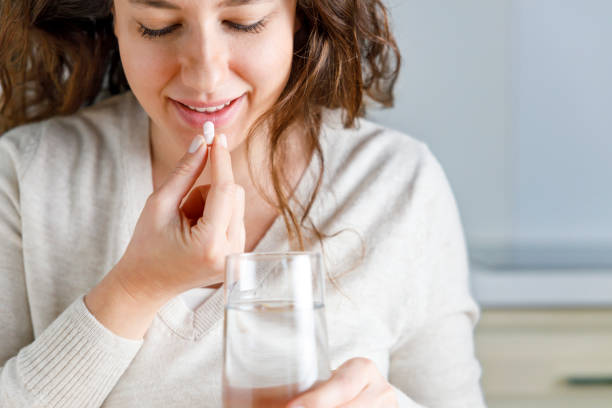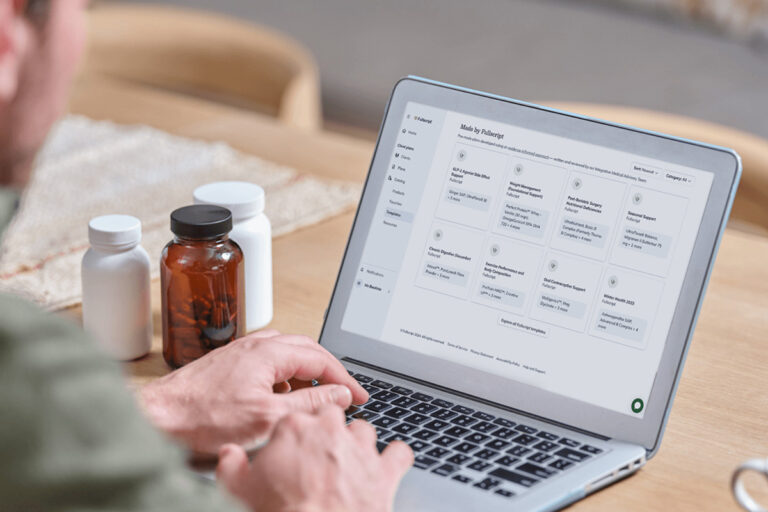This article provides an overview of hot flashes, a common symptom of menopause, as well as an integrative protocol for the treatment of hot flashes.
What are hot flashes?
Menopause is characterized by changes in hormone levels, which results in a cessation of menstruation and loss of childbearing function. (12) The hormonal changes include a decrease in estrogen, cessation of cyclical progesterone production, as well as an increase in the gonadotropins follicle-stimulating hormone (FSH) and luteinizing hormone (LH). (13)Throughout menopause, most women experience symptoms, which may vary by individual, such as breast tenderness, vaginal dryness, (4) sleep disturbances, mood disorders, cognitive decline, sexual dysfunction, and weight gain. (8)
Hot flashes, also known as hot flushes, are often one of the first signs of menopause. Approximately 80% of women in menopause experience hot flashes and night sweats, known as vasomotor symptoms. (8)

Causes and risk factors
While menopause is a normal physiological event that occurs in women, certain factors may be associated with an increased risk of vasomotor symptoms, including:- Depression and anxiety
- Ethnicity: highest rates of vasomotor symptoms are reported by African American women
- History of premenstrual symptoms
- Higher body mass index (BMI)
- Lower education level
- Menopausal status: transition to late perimenopause
- Older age
- Smoking (6)
Signs, symptoms, and complications
Hot flashes are characterized by a sudden onset of feelings of warmth, often in the face, neck, and chest, and may be accompanied by sweating, irritability, and panic. (4) If left untreated, hot flash symptoms will dissipate after approximately 7.4 years. (12)Supplements for hot flashes
An integrative protocol for hot flashes may involve hormonal replacement therapy (HRT), mind-body practices (e.g., cognitive behavioral therapy), exercise, and dietary supplements such as vitamin E, isoflavones, and evening primrose oil. (4)(8)
Vitamin E
Vitamin E is a group of fat-soluble compounds including alpha-, beta-, gamma-, and delta-tocopherol and alpha-, beta-, gamma-, and delta-tocotrienol. Vitamin E has immunomodulation, antiplatelet, and antioxidant effects in the body. (9) Food sources of vitamin E include seeds (e.g., pumpkin, sunflower), nuts (e.g., almonds, hazelnuts), peanuts, leafy greens (e.g., turnip greens, spinach), and tomatoes. (15)During menopause, estrogen levels decline, which may increase oxidative stress in the body as estrogen acts as a natural antioxidant. Research suggests that vitamin E, a free radical scavenger, may neutralize oxidative stress. Vitamin E has been shown to improve hot flash symptoms and reduce the risk of cardiovascular disease. (4)
Isoflavones
Isoflavones are a class of phytoestrogens found in legumes, such as soybeans, chickpeas, fava beans, and peanuts. (14) Phytoestrogens, plant-based compounds that are structurally similar to estradiol, (10) possess estrogen-like properties as they have the ability to bind to estrogen receptors in the body. (2)(11) Isoflavones may exert either an estrogenic or antiestrogenic effect on the body, when circulating levels of estrogen are either low or high, respectively. An association between high dietary intake of phytoestrogens and lower incidence of menopausal vasomotor symptoms in Asian women has prompted research examining the effects of supplemental phytoestrogens for these symptoms. A meta-analysis examining the efficacy of phytoestrogens on symptoms of menopause found phytoestrogens to be effective and safe, without a significant difference in side effects between groups receiving treatment versus placebo. (2)
Evening primrose oil
Evening primrose oil (EPO) is derived from the seeds of the evening primrose plant (Oenothera biennis). EPO is a source of the omega-6 fatty acids gamma-linolenic acid (GLA) and linoleic acid. The benefits of EPO may be a result of the effects of omega fatty acids on immune cells, and their indirect effects on the production of eicosanoids, (1) bioactive signaling lipids involved in the inflammatory response. (3) EPO supplementation has been studied for its anti-inflammatory potential in various conditions, such as eczema and rheumatoid arthritis, as well as for menopausal and premenstrual symptoms. (1) One study found that EPO supplementation decreased the frequency and severity of hot flashes compared to placebo. (5)The bottom line
Menopause is a natural physiological event that occurs as women age. Hot flashes, a vasomotor symptom of menopause, may be addressed with certain dietary supplements, including vitamin E, isoflavones, and evening primrose oil. A protocol using natural supplements can be used therapeutically on its own or as an adjunct to existing treatment. If you are not an integrative healthcare provider, we recommend speaking with one to learn whether these supplements are ideal for your wellness plan.If you are a practitioner, view our hot flashes protocol.
- Bayles, B., & Usatine, R. (2009). Evening primrose oil. American Family Physician, 80(12), 1405-1408.
- Chen, M. N., Lin, C. C., & Liu, C. F. (2015). Efficacy of phytoestrogens for menopausal symptoms: A meta-analysis and systematic review. Climacteric, 18(2), 260–269.
- Dennis, E. A., & Norris, P. C. (2015). Eicosanoid storm in infection and inflammation. Nature Reviews Immunology, 15(8), 511–523.
- Doshi, S. B., & Agarwal, A. (2013). The role of oxidative stress in menopause. Journal of mid-life health, 4(3), 140–146.
- Farzaneh, F., Fatehi, S., Sohrabi, M.-R., & Alizadeh, K. (2013). The effect of oral evening primrose oil on menopausal hot flashes: A randomized clinical trial. Archives of Gynecology and Obstetrics, 288(5), 1075–1079.
- Gold, E. B., Colvin, A., Avis, N., Bromberger, J., Greendale, G. A., Powell, L., … Matthews, K. (2006). Longitudinal analysis of the association between vasomotor symptoms and race/ethnicity across the menopausal transition: Study of women’s health across the nation. American Journal of Public Health, 96(7), 1226–1235.
- Hill, K. (1996). The demography of menopause. Maturitas, 23(2), 113–127.
- Johnson, A., Roberts, L., & Elkins, G. (2019). Complementary and alternative medicine for menopause. Journal of Evidence-Based Integrative Medicine, 24.
- Kemnic, T. K., & Coleman, M. (2019). Vitamin E deficiency. In StatPearls . Retrieved from: https://www.ncbi.nlm.nih.gov/books/NBK519051/
- Li, L., Lv, Y., Xu, L., & Zheng, Q. (2015). Quantitative efficacy of soy isoflavones on menopausal hot flashes. British Journal of Clinical Pharmacology, 79(4), 593–604.
- Mostrom, M., & Evans, T. J. (2011). Phytoestrogens. In Reproductive and Developmental Toxicology (pp. 707–722). Academic Press. Retrieved from https://www.sciencedirect.com/science/article/pii/B9780123820327100529
- Peacock, K., & Ketvertis, K. M. (2019). Menopause. In StatPearls . Retrieved from: https://www.ncbi.nlm.nih.gov/books/NBK507826/
- Perna, S., Peroni, G., Miccono, A., Riva, A., Morazzoni, P., Allegrini, P., … Rondanelli, M. (2016). Multidimensional effects of soy isoflavone by food or supplements in menopause women: A systematic review and bibliometric analysis. Natural Product Communications, 11(11).
- Thrane, M., Paulsen, P. V., Orcutt, M. W., & Krieger, T. M. (2017). Soy protein: Impacts, production, and applications. In Sustainable Protein Sources (pp. 23–45). Academic Press. Retrieved from https://www.sciencedirect.com/science/article/pii/B9780128027783000020
- USDA. (n.d.) USDA Food Composition Databases. Retrieved from https://ndb.nal.usda.gov/ndb/





